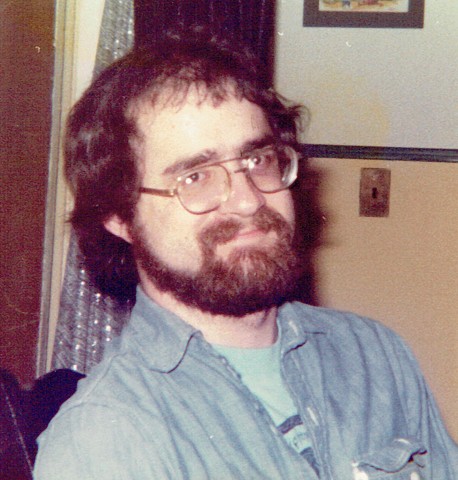RH: Jay, how did you get involved with Whole Earth?
JK: It was through Stewart sending me a postcard in '75 inviting me to do a comic for CQ [CoEvolution Quarterly]. He saw a wordless 4-page comic that I had done for Arcade, which was a magazine edited by Art Spiegelman and Bill Griffith trying to bring underground comics into normal newsstand distribution. For their first issue I had done a scratchboard strip called "Midnight" - about a circle of friends living communally in the country, off the grid. It was a sort of metaphor for my friends who had dreams of living on a property in the Blue Ridge Mountains, all of us building our homes there, and of course the whole thing fell through. In any event, something about it attracted Stewart so I went over to Sausalito to meet him. That was really the first I was aware of CoEvolution. I had been distantly aware of the Whole Earth Catalog but what it was focused on didn't interest me terribly. I was never a big tool person or a do-it-yourselfer. But CQ was so open to anything that it became a great home for me to contribute writing and illustrations. Within a year or two of my doing that strip for the magazine, I started contributing regularly, and Susan Goodrick, who was one of the production managers, asked me to join the production staff as a paste-up person. So through the '70s I had the same 6-weeks-on, 6-weeks-off relationship to the magazine that Kathleen O'Neill speaks of in her interview. Then when Stewart got interested in personal computers, at the very beginning of that wave, and wanted to do the Whole Earth Software Catalog and the Software Review, he couldn't manage that and also edit CoEvolution, so he set up an arrangement whereby Art Kleiner and I were going to alternate editing issues of CQ.
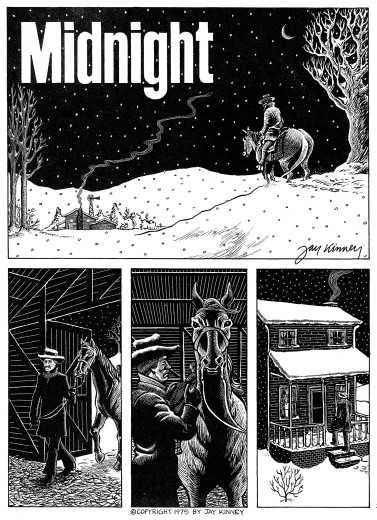
(Arcade, 1975)
RH: While he focused on the Software Review?
JK: And on The WELL in its early days. But as it turned out, Art Kleiner was also focused much more on the Software Review, so for 5 out of 6 issues of CQ I was the editor. That was an interesting time but by the time I left as editor I was ready to do my own magazine. Because the staff - it was so crazy because they were trying to do CQ and the software magazine at the same time and the whole thing was starting to spin out of control. Increasingly the staff was rambunctious and rebellious. Everyone was under so much stress that one day I just threw up my hands in despair and said enough of this, I'm going to try to start my own magazine, which I already had the idea for.
RH: Why was the staff rambunctious and rebellious?
JK: I think it was stress. Instead of the old 6-weeks-on, 6-weeks-off pattern, it was full time bouncing between two magazines. There had been a relatively leisurely pace with Whole Earth, which made it a pleasure to work there. CQ being a quarterly, and having 3 months to get an issue together, it was a fairly laid back pace. But once they started trying to produce two magazines at the same time, while having magazine consultants set up the distribution, and dealing suddenly with a color magazine, which is what the Software Review was, as well as a black and white magazine, which is what CoEvolution was [except for the cover], personalities got fried. At least that's how I interpreted it.
RH: What years are we talking about? '83, '84, '85?
JK: '83, and especially '84. And then I started Gnosis in '85. I didn't have any income from it for the first two years, so I went back to doing production work, paste-up and whatnot, at CQ, and guest edited the issue on Islam [No. 49, winter 1985]. I went back to the 6 weeks on, 6 weeks off pattern and during my weeks off I would work on Gnosis. In the first two years, Gnosis only came out twice a year to accommodate working for CQ.
RH: You mentioned earlier that it was your drawing that attracted Stewart. You weren't a maker or Whole Earth fan, and that explains something I always wondered about: your interests always stood out as different. The Islam issue, for example. I couldn't imagine Stewart putting out something like that, so I wonder how it came about?
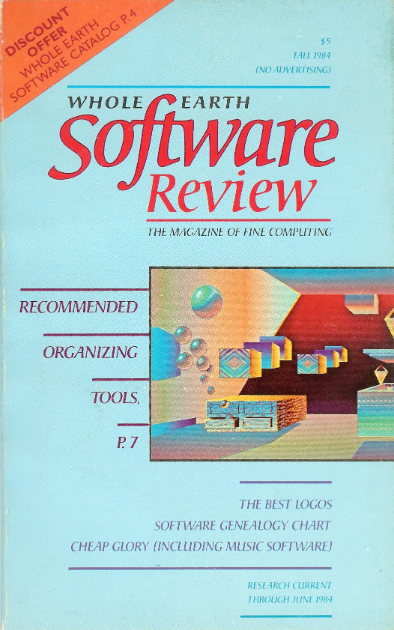
JK: I would give some of the credit for expanding the magazine in new directions to Kevin Kelly. He had an adventurous attitude and he gave me the go-ahead to do that section on Islam. Remember, he had backpacked through Pakistan.
RH: And he was more interested in religion than Stewart.
JK: Exactly. I'm always interested in how things work: here's a belief system, how does that work? My life is a flow of enthusiasms for certain subjects and areas of life. I get really heavily into them and that was reflected in what I proposed to contribute in terms of survey articles for Whole Earth. After 5 years of being into something I would catch the bug for something else and be really into that. And these things tend to cycle around, so I come back to a subject I was really interested in 20 or 15 years previously, and it's time to look at that again. That's the backstory for a lot of what I contributed.
RH: That would explain why you did that "Beyond Left and Right" issue of Whole Earth in 2000. That had been an interest of yours 20 years earlier.
JK: The very first article I wrote for CQ was a survey of the American post-New-Left: what's happening now, how have things changed? ["What's Left? Revisiting the Revolution," CQ 5, winter 1975] And then around 1978 I got intrigued by libertarianism, so I went over to the Cato Institute and they filled me in on what was happening with the libertarian movement. I wrote that up and did another survey of far right magazines, and another on Catholicism, and another on punk magazines.
RH: What was working for Whole Earth like in 2000 compared to the 1970s and '80s? I sense that it became a different place.
JK: Well, yes and no. How I see the trajectory of the magazine is that once Stewart let it go and really turned over the reins to other people, it had a series of people running it, 2 or 3 in a couple years. Around 1993-94 the operation just ran through the money that had been advanced by HarperCollins for the Millennium Whole Earth Catalog and the main effort to carry on with the magazine after that flurry of activity was by Peter Warshall and Mike Stone, who decided this was too good a thing to just let die, let's carry on. Peter Warshall's interests had always been land use and things like that, so under his guardianship the magazine reverted more to the early 1970s CQ. But by that time the classic Whole Earth approach was no longer cutting edge. "Oh, what about ecology? What about back to the land and all that stuff?" It felt like people had lived through that and now it was of less interest. I forget exactly when it finally died [2002], but at that point I think it had outlasted much of its long-time readership.
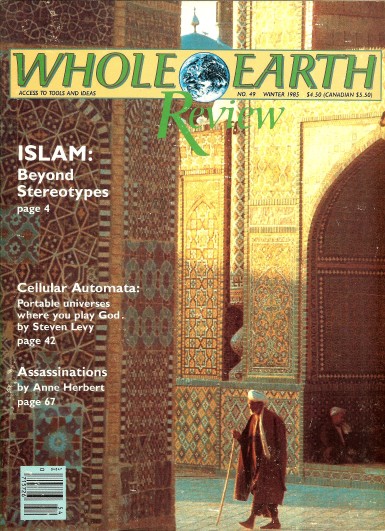
RH: Whose decision was it to make Peter the editor?
JK: I wasn't privy to that. That was after I was concentrating on Gnosis, and even though I tried to keep my hand in during the time when John Sumser was the publisher and Howard Rheingold was editor, I just wasn't around much.
RH: Was Stewart involved in these late stage crises?
JK: Not that I was aware of. Once the The WELL got up and running and the whole software side of things petered out, I think his interests started going elsewhere, particularly after Kevin left Whole Earth to help start Wired, and Stewart and Peter Schwartz, Jay Ogilvy, Kevin and others started the Global Business Network, providing futurist scenarios to corporations - which didn't interest me at all.
RH: Were you sad to see Whole Earth losing audience?
JK: I was. What I always loved about Whole Earth as a forum to write for was that pretty much anything I came up with, they were willing to print, and the editorial touch, the copy editing, at least on my writing, was pretty light and I was able to maintain my voice. I came up with things to write about or to review pretty much every issue. Richard Nilsen, the assistant editor - he was like the editorial backbone of the magazine. Whole Earth would get all sorts of stuff in the mail, including proposals for something to be reviewed, and the things Richard Nilsen thought might be up my alley he passed along to me. So a lot of ideas for things to review were courtesy of Richard Nilsen. He was the unsung hero and glue of the editorial side of the magazine during many of the years I was involved. It's unfortunate that he died quite a while ago, because he would have been a great person to interview.
RH: We had a conference call a few days ago to talk about the event in October and one of the topics that came up was the number of staffers who had died. J. Baldwin is the latest casualty.
JK: Well, the staff went through several generations. After I did the "Beyond Left and Right" issue in 2000, the guy who had been the publisher stepped down and Peter Warshall asked if I would come in as interim publisher, which I did for 3 months. I had just laid Gnosis magazine to rest in 1999. And even though I was familiar with the publishing side of things, because I had published my own magazine, I was still burnt out from Gnosis and its demise, which was hugely traumatic. And so after 3 months they found someone else to take over and I went my way but still did some reviews for the magazine.
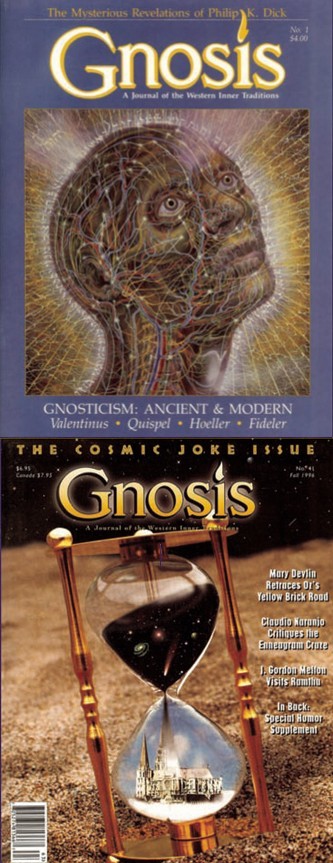
RH: Could you talk more about Gnosis? What was the trajectory of that magazine? Was it similar to Whole Earth's?
JK: It was an extension of my interests in spiritual areas. The idea for it began forming in my mind around 1980, '81, '82. Elaine Pagels' book, The Gnostic Gospels, came out in 1979, and the Nag Hammadi Scriptures came out in English translation in 1978. Gnosticism intrigued me because it was like an alternate version of Christianity, with one foot in the Jewish temple and one foot in the Christian church. From that seed of interest my attention expanded to all varieties of Western esoteric traditions, mystical beliefs and occult practices, and that was the focus of Gnosis. Yoga Journal or the original New Age Journal concentrated on Eastern spirituality, but there wasn't a comparable magazine for people interested in Western traditions. So that was the idea behind it.
RH: It strikes me that Gnosis would have been like Whole Earth in spawning a community - not just having subscribers but organizing a set of people with shared interests.
JK: It definitely had its audience. We rapidly developed a network of writers, people who were well informed on Sufism, say, or Neo-Pagan traditions. But it didn't coalesce into a community in quite the same way as Whole Earth. Our niche was much smaller. The total news stand and subscriber circulation for Gnosis by the end was about fifteen thousand. We used the same small, independent distributors that Whole Earth used with CoEvolution. That was how I was able to start the magazine. While I was CQ's editor I learned how you work with these distributors and what the terms are. For the distributor in Seattle, for example, Gnosis was the second best selling magazine they carried. We sold more at news stands than The New Republic. Within its circles, Gnosis was very well known, loved and influential. But I had to lay it to rest anyway, because we had one financial crisis too many. One of our main newsstand distributors went bankrupt owing us tens of thousands of dollars. And at the same time our office manager departed and I could not find a capable replacement willing to work for the amount of money we could pay as a nonprofit. So I had to lay it to rest. It was like killing my own child. After that I had a real problem even looking at newsstands and magazines.
RH: Did you feel the same way about Whole Earth's demise?
JK: Well, by the time it ended, it felt like that was the natural and right thing to happen. When Kevin left Whole Earth, that was for me the end of an era. My contributing to the magazine fell off. All my energy went into Gnosis.
RH: What are you up to now, Jay? You're not publishing a magazine, are you writing? Retired? What's your situation?
JK: For the past 10 years I've been working for Bolerium Books, which is a book seller here in San Francisco that specializes in ephemera related to social movements. As things developed in academia, after the '70s, a lot of universities that opened Black Studies departments, Gender Studies, LGBT Studies, Chicano Studies - all the various identity groups and social movements - Bolerium became quite involved in helping special collection librarians build collections for those different categories of studies.
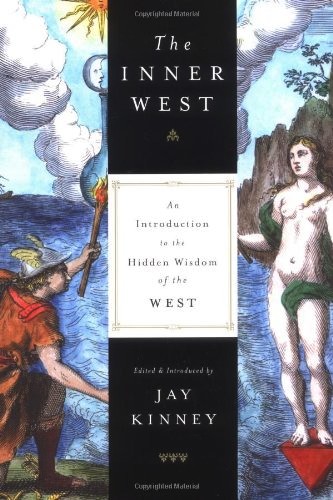
(Tarcher/Penguin, 2004)
RH: That sounds like a fascinating job.
JK: It is. It's a job that in many respects I had unknowingly been preparing for, because I was already familiar with all the little left sectarian groups from the '60s on, and with the right wing in the same way, because I had done all these survey articles for WE and kept up with all parts of the political spectrum over the years. A lot of what I'm cataloging these days - underground newspapers, SDS New Left Notes, ephemera in that vein - I'm very familiar with. And that's partly due to covering these subjects for Whole Earth for so long. I've also co-written a book with Richard Smoley, who was editor at Gnosis, called Hidden Wisdom: a Guide to the Western Inner Traditions, and I've edited an anthology, The Inner West, which was a collection of articles from Gnosis. On my own I wrote The Masonic Myth, which is an overview of Freemasonry, its history, ideals and reality. I still edit, write and research on a freelance basis, including reviews and articles for magazines like Reason, The Quest and California Freemason.
RH: I have to end by asking if you still draw?
JK: Not much. Arthritis in my hands made for aching thumbs. And my old bugaboo with cartooning was that the art supplies - particularly brushes and the quality of bristol board - had really gone down over the years, to the point where it was hard to get a good, pliant brush that would last. I began to get out of cartooning in the '80s, when I realized that the freedom of the old Underground Comix movement was a thing of the past. The other thing was that my cartooning was always a means to an end. I had something I wanted to say, so drawing for me was always more work than pleasure. I finally got a couple of comic strips into Playboy, which was the ultimate dream for cartoonists because it paid very well. But after my second strip, the cartoon editor - who was a woman, incidentally - asked if I couldn't do something more normal. That totally ended my interest in working for them. Because my pleasure had been in coming up with stuff that was off-the-wall but still enough in their area that Hefner would sign off on it. But here was the cartoon editor wanting me to be more normal. Sorry, I don't do normal. It's probably been 5 or 6 years since I did any cartooning. But that's all right. The things I want to say these days are better expressed with words.
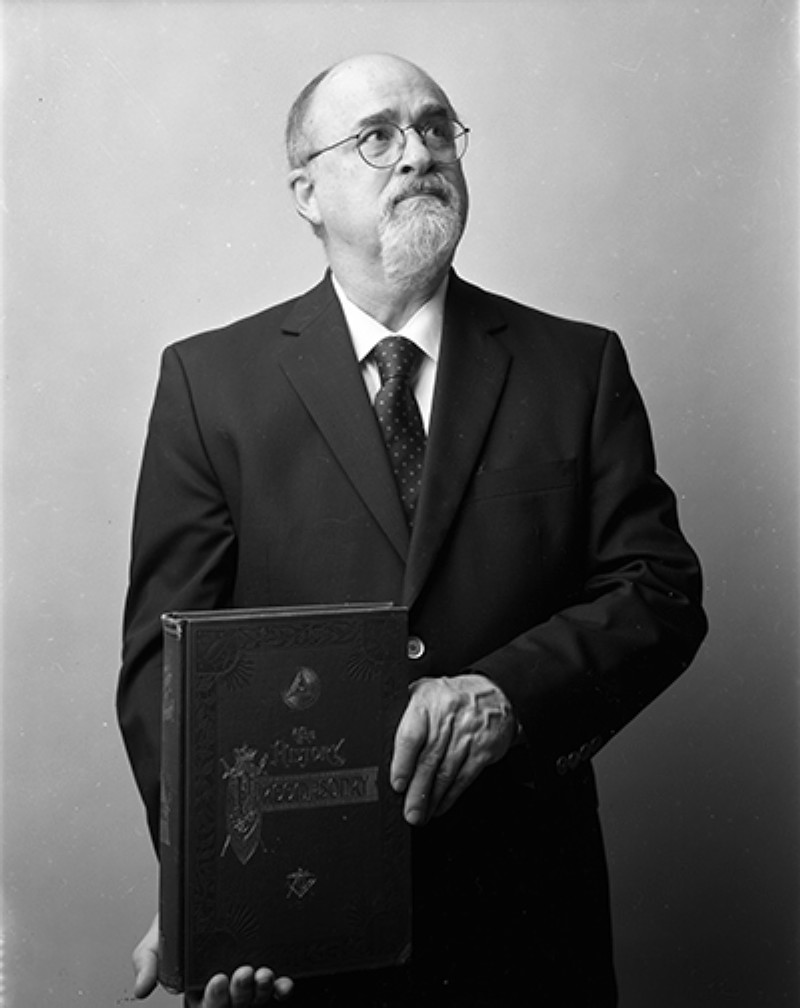
Jay Kinney (2017)
